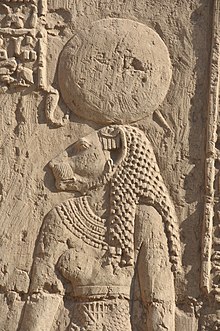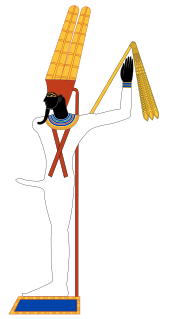
Min is an ancient Egyptian god whose cult originated in the predynastic period. He was represented in many different forms, but was most often represented in male human form, shown with an erect penis which he holds in his right hand and an upheld left arm holding a flail.

Sir William Matthew Flinders Petrie, commonly known as simply Flinders Petrie, was a British Egyptologist and a pioneer of systematic methodology in archaeology and the preservation of artefacts. He held the first chair of Egyptology in the United Kingdom, and excavated many of the most important archaeological sites in Egypt in conjunction with his wife, Hilda Urlin. Some consider his most famous discovery to be that of the Merneptah Stele, an opinion with which Petrie himself concurred.

Djer is considered the third pharaoh of the First Dynasty of ancient Egypt in current Egyptology. He lived around the mid-thirty-first century BC and reigned for c. 40 years. A mummified forearm of Djer or his wife was discovered by Flinders Petrie, but was discarded by Émile Brugsch.

Naucratis or Naukratis was a city and trading-post in ancient Egypt, located on the Canopic (western-most) branch of the Nile river, south-east of the Mediterranean sea and the city of Alexandria. Naucratis was the first and, for much of its early history, the only permanent Greek colony in Egypt, serving as a symbiotic nexus for the interchange of Greek and Egyptian art and culture.

Heracleopolis Magna and Heracleopolis and Herakleoupolis (Ἡρακλεούπολις), is the Roman name of the capital of the 20th nome of ancient Upper Egypt, known in Ancient Egyptian as Het-Nesut. The site is located approximately 15 km (9.3 mi) west of the modern city of Beni Suef, in the Beni Suef Governorate of Egypt.

The Petrie Museum of Egyptian Archaeology in London is part of University College London Museums and Collections. The museum contains over 80,000 objects and ranks among some of the world's leading collections of Egyptian and Sudanese material.

Khakheperre Senusret II was the fourth pharaoh of the Twelfth Dynasty of Egypt. He ruled from 1897 BC to 1878 BC. His pyramid was constructed at El-Lahun. Senusret II took a great deal of interest in the Faiyum oasis region and began work on an extensive irrigation system from Bahr Yussef through to Lake Moeris through the construction of a dike at El-Lahun and the addition of a network of drainage canals. The purpose of his project was to increase the amount of cultivable land in that area. The importance of this project is emphasized by Senusret II's decision to move the royal necropolis from Dahshur to El-Lahun where he built his pyramid. This location would remain the political capital for the 12th and 13th Dynasties of Egypt. The king also established the first known workers' quarter in the nearby town of Senusrethotep (Kahun).

Athribis was an ancient city in Lower Egypt. It is located in present-day Tell Atrib, just northeast of Benha on the hill of Kom Sidi Yusuf. The town lies around 40 km north of Cairo, on the eastern bank of the Damietta branch of the Nile. It was mainly occupied during the Ptolemaic, Roman, and Byzantine eras.

Sharuhen was an ancient town in the Negev Desert or perhaps in Gaza. Following the expulsion of the Hyksos from Egypt in the second half of the 16th century BCE, they fled to Sharuhen and fortified it. The armies of Pharaoh Ahmose I seized and razed the town after a three-year siege.

El Lahun.

Winifred Mabel Bruntonnée Newberry was a South African painter, illustrator and Egyptologist.
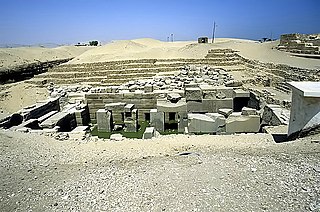
The Osirion or Osireion is an ancient megalithic structure located at Abydos, to the rear of the Mortuary Temple of Seti I. Its original purpose is unknown.

The Besor is a wadi in southern Israel. The stream begins at Mount Boker, and spills into the Mediterranean Sea near Al-Zahra in the Gaza Strip, where it is called Wadi Gaza, also spelled Wadi Ghazza or Wadi 'Azza. Further upstream it is marked as Wadi esh-Shallaleh on the 1878 Survey of Western Palestine map. There are several important archaeological sites located in this area.

Tall al-Ajjul or Tell el-'Ajul is an archaeological mound or tell in the Gaza Strip. The fortified city excavated at the site dates as far back as ca. 2000-1800 BCE and was inhabited during the Bronze Age. It is located at the mouth of Wadi Ghazzah just south of the town of Gaza.
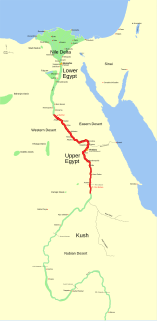
The Naqada culture is an archaeological culture of Chalcolithic Predynastic Egypt, named for the town of Naqada, Qena Governorate. A 2013 Oxford University radio carbon dating study of the Predynastic period suggests a beginning date sometime between 3,800 and 3,700 BC.

Hilda Mary Isabel Petrie was an Irish-born British Egyptologist and wife of Flinders Petrie, the father of scientific archaeology. Having studied geology, she was hired by Flinders Petrie at age 25 as an artist, which led to their marriage and a working partnership that endured for their lifetimes. Hilda travelled and worked with Flinders Petrie to excavate and record numerous sites in Egypt, and later in Palestine. This included directing some excavations herself, and working in often difficult and dangerous conditions to produce copies of tomb hieroglyphs and plans, and to record the work for reports to the Egypt Exploration Fund. When the British School of Archaeology in Egypt was founded in 1905 in London by Flinders Petrie, she worked as its secretary and fundraiser to secure support for the school and their continued excavations. Hilda took part in archaeological excavations and surveys throughout her married life, except for a period while their two children were young. Her work was published, and she also gave public lectures in London and elsewhere.
Margaret Stefana Drower MBE (1911–2012) was a historian of Ancient Near Eastern History and Egyptology. She was awarded the MBE and elected a Fellow of the Society of Antiquaries of London. She wrote the definitive biography of Flinders Petrie.

The pyramid of Senusret II is the pyramid complex constructed for the pharaoh Senusret II in the Twelfth Dynasty.
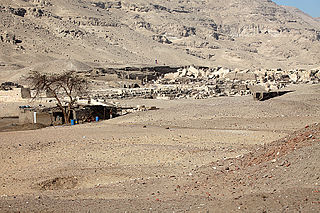
The Athribis Project is an archaeological and philological endeavour investigating the ruins of the Pharaonic and later Coptic Christian community of the Ancient Egyptian town of Athribis, near to the modern city of Sohag, Egypt. The aim of the project is to fully and thoroughly research, preserve and publish the written records, material technologies and phases of construction of the large temple in the town, which was dedicated to the god Min-Re, his wife Repyt and their son, the child-god Kolanthes.

Christian Leitz is a German Egyptologist.
